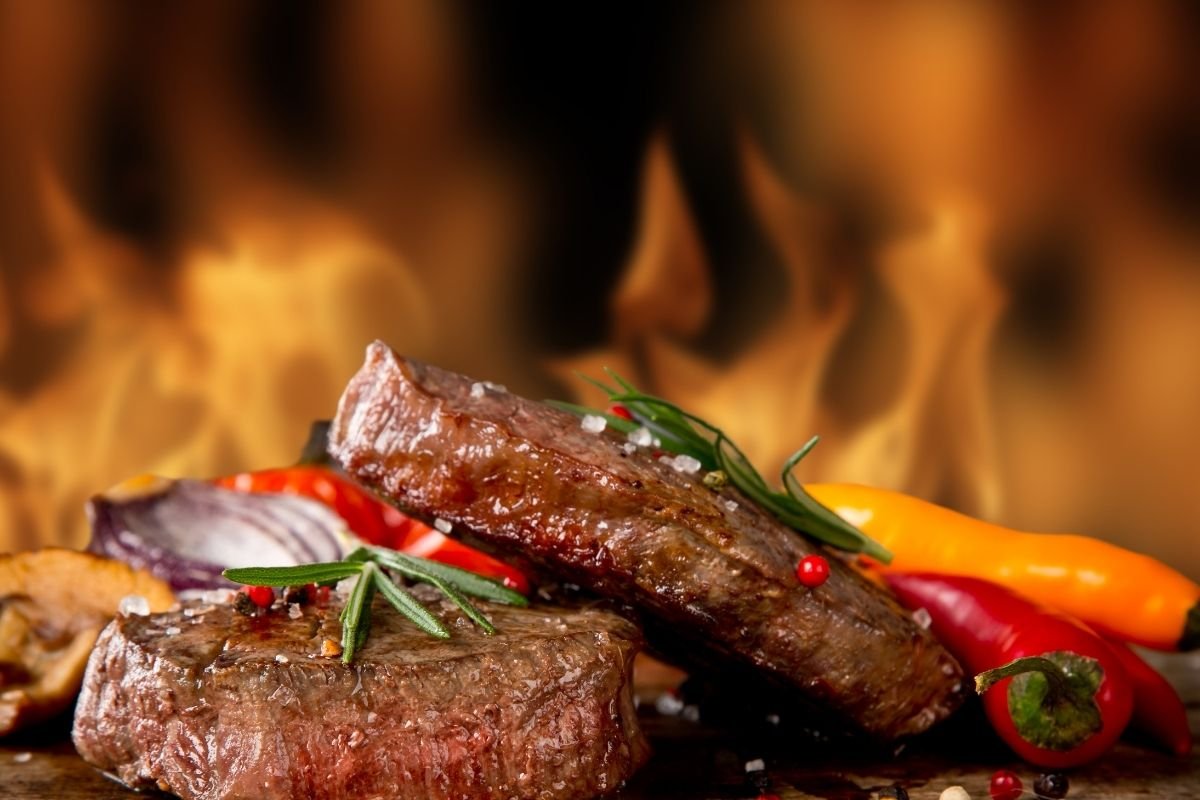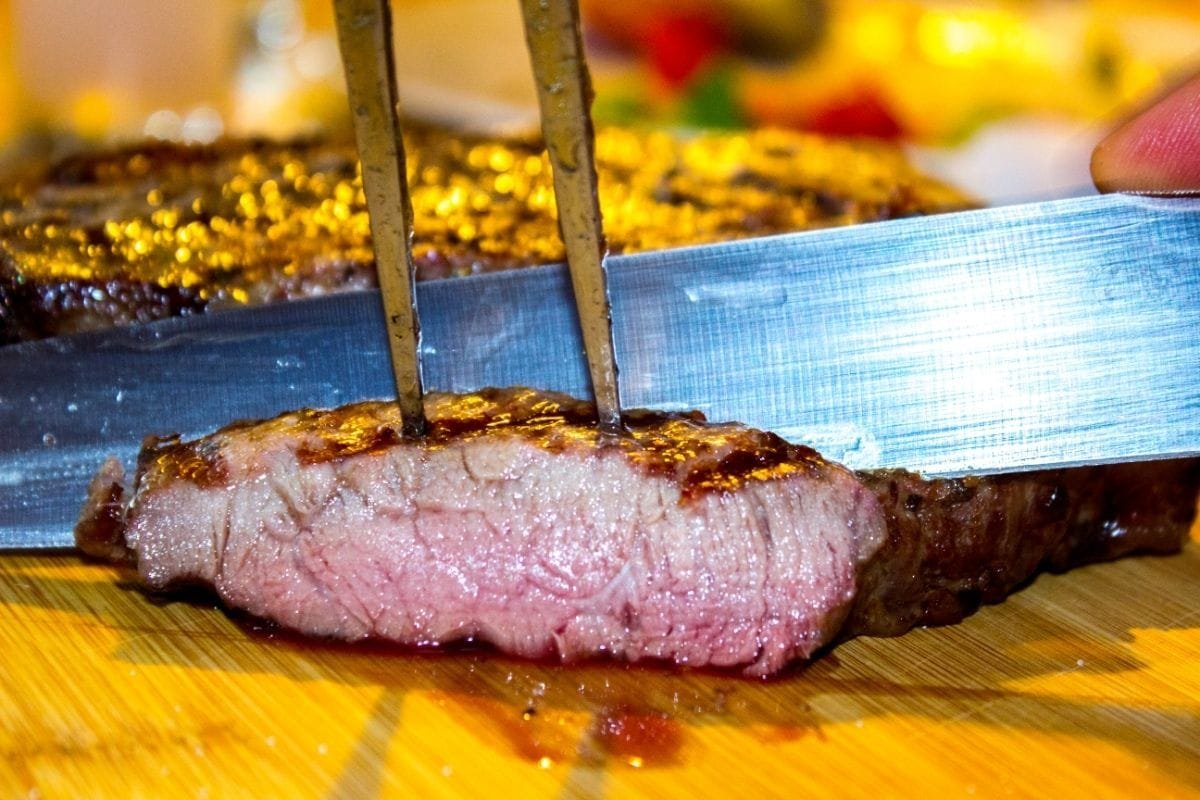It’s a simple question, but a good one. When someone asks for a ‘steak’, do they mean beef? Are all cuts of beef ‘steaks’? There’s a lot to unpack, and the answer isn’t quite as simple as you’d think.

Handily, this just happens to be a guide on all there is to know on the term ‘steak’, and whether it is different to ‘beef’ after all.
What Is Beef?
‘Beef’ is a term which exclusively refers to meat from cattle; cows.
Any type of meat from a cow, regardless of the form it is served in, is still ‘beef’.
Beef is a very popular red meat, found in cuisine from across the world: from Hamburgers, to Fajitas, to Wagyu Stir-fry.
Eating beef is an excellent source of protein, iron, and Vitamin B12; eating too much red meat is considered extremely unhealthy, and is associated with serious medical conditions.
Beef mass-farming practices are also a leading cause of environmental damage.
It remains however, one of the most popular meats on the global market.
There are a few notable exceptions. In some global religions such as Hindu, cows are considered sacred.
Consuming them for meat is considered a sacrilege, and you are therefore unlikely to encounter dishes which include beef in countries such as India.
Other religions, such as Buddhism, are popular across South East Asia as well; Buddhists practice vegetarianism or veganism as part of their beliefs.
In these areas of the world, beef dishes are far less popular than in places like the West.
In poorer parts of the world, red meat is still a luxury rarely enjoyed.
What is Steak?
‘Steak’ is a wide term, which refers to a cut of meat cut across the grain of the muscle of an animal.
You can have a steak from many different kinds of larger animal: including mutton, lamb, veal, deer, turkey, pork, or even kangaroo.
This means that not every cut of meat is a steak, even if it is thick cut (although most thick cuts are steaks).
In popular discourse though, a ‘steak’ refers to a cut from beef.
The beef steak is far and away the most popular and varied kind, so it’s safe to assume that when someone asks for a ‘steak’ they mean one cut from a cow, and not a kangaroo.
Steaks cut from other animals are usually qualified by the meat type (e.g. ‘lamb steak’).
But it still isn’t as simple as that- you’ve probably noticed that even among steaks cut from beef, there’s a massive variance in name, pricing and appearance.
In fact, the amount of choice on display at your local butcher or grocery store is simply mind-boggling.
So what are the differences between beef steaks, and why are there so many? We take a brief dip into some of the more popular varieties of steak at the marketplace in the section below.
What Part of The Cow Is This Steak From?

Depending on where the steak is cut from, it will have a completely different texture and flavor.
As such, some cuts are better for frying or for braising, and some are just better as ground beef.
What’s interesting (and a little confusing) is that the different cuts of steak from a cow- and their names- vary massively depending on where in the world you live.
What’s even more confusing is that the name of a particular cut of steak in America will have a similar name to a cut of steak in Britain, but be from a completely different part of the cow.
What you’re ordering when you order a ‘sirloin’, for example, will be a different cut of meat depending on whether you’re sat in a steakhouse in the States or somewhere in the Commonwealth.
For some cuts of steak, it’s even different again in France.
We’ve tried to simplify some of the most common cuts of steak for you below:
Sirloin
The sirloin is a cut of steak taken from an area around the spine of the cow- an area where there isn’t much use for muscle, and thus isn’t exercised.
As such, this steak is nice and tender but only has a mild flavor. In Britain, this area is called the ‘rump’; ‘sirloin’ refers to a different cut.
In the States, sirloin steak is further categorized into sirloin, tenderloin, and bottom and top sirloin- all tender and mild, but in different variances with different pricings.
The tenderloin, also called filet steak, is the softest and priciest of all sirloin.
Rib
In American butchery, the rib steak comes from a large area of the cow’s back further to the front of the animal than the loin.
In British butchery, the cuts are further sub-categorized over a more select portion of the animal.
The ribeye is the most common type of steak from this section, and is venerated among barbecuers for its rich, beefy flavor.
Cut very thick and marbled with fat throughout, this is one of the most popular steaks for home use.
What is the main difference between beef cuts and steak?
When it comes to types of beef cuts and preparation, the main difference between beef cuts and steak is that steak refers to specific cuts of beef that are suitable for grilling or frying, while beef cuts encompass a wider variety of cuts, including those best suited for roasting, braising, or stewing.
Flank
The flank is cut from under the cow, around the belly. This meat is one of the cheaper steak cuts as it can be quite tough in the wrong hands, but it is still popular among meat-lovers and becomes more tender as it approaches medium/medium-rare.
Chuck
The chuck, which also includes the clod, is a fatty but tasteful part of the cow which tends to be used for ground beef.
Clod and chuck steaks do have a market however: chuck eye, chuck roll, clod top blade, and the teres major are all steaks cut from this region of the animal leading from the neck to the back.
The teres major is actually a well sort-after cut. It is extremely tender, but unlike the sirloin it is actually very flavorsome and with minimal fat. You may find it served as ‘bistro steak’.
Round
The round is the rear of the animal, which also makes for very popular steaks even if it is a little tough.
As there is a lack of fat present in this part of the cow, it is an extremely versatile cut of meat- not just for steaks.
It is well-used for roasting and braising, as well as for drying out for use as beef jerky.
In South America ‘rump cover’ is a sort-after cut of meat that is considered extremely toothsome, but it is virtually unheard of in either American or British butchery.
